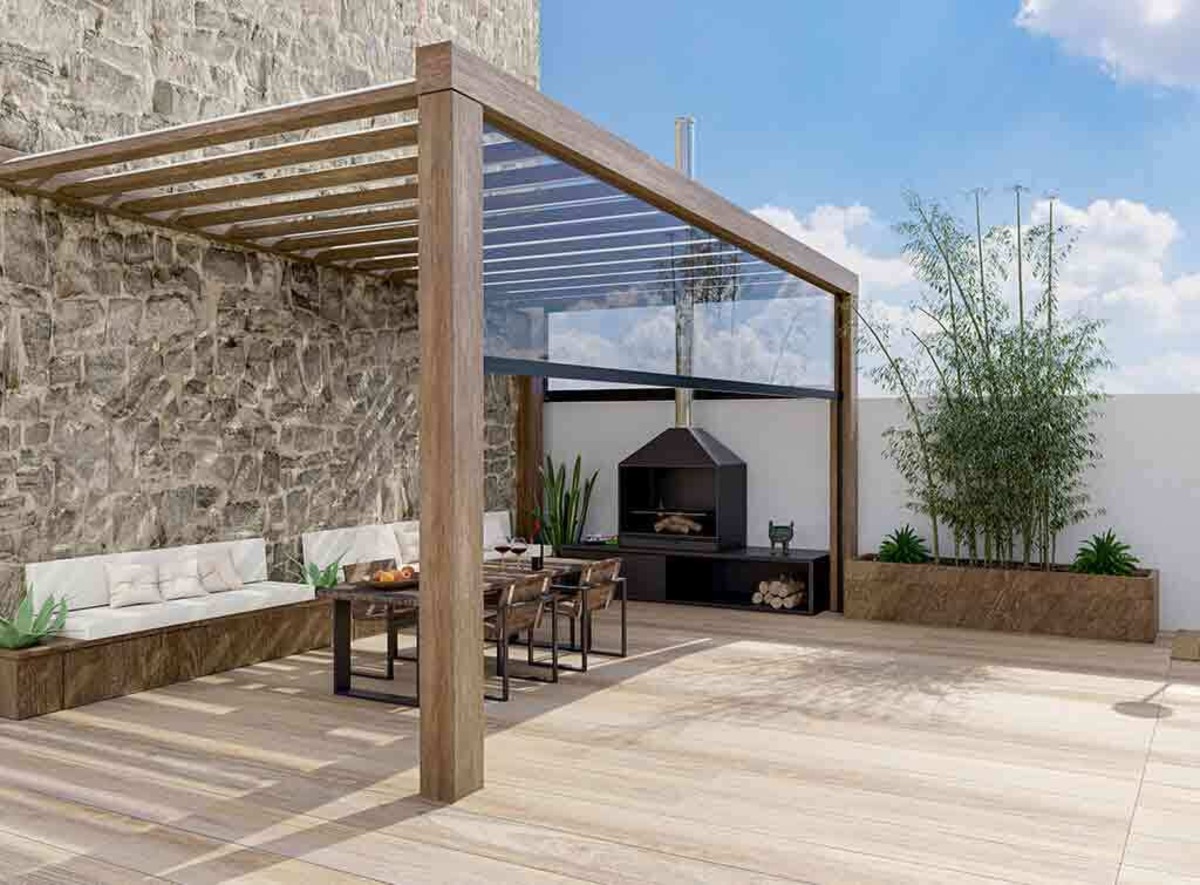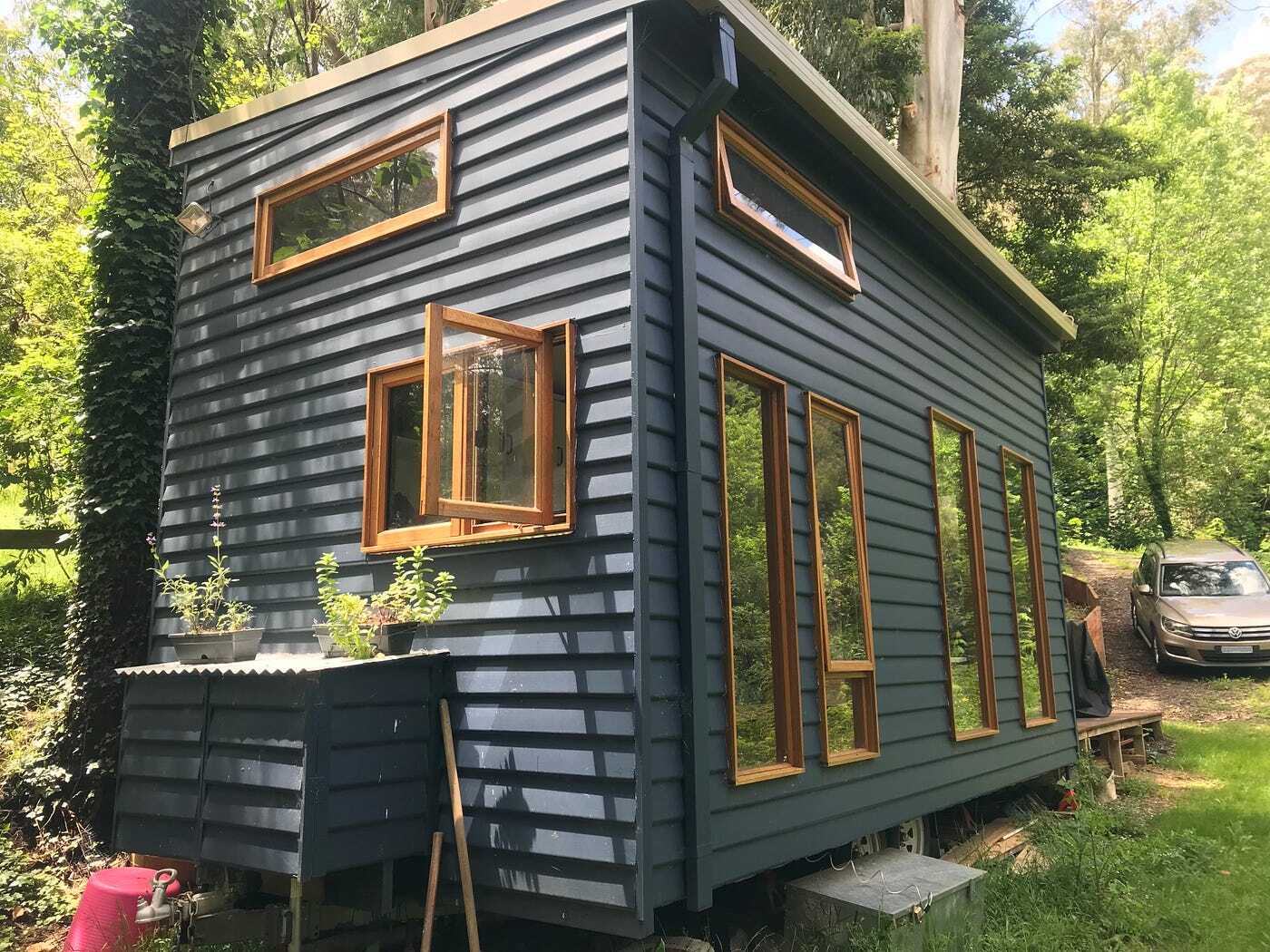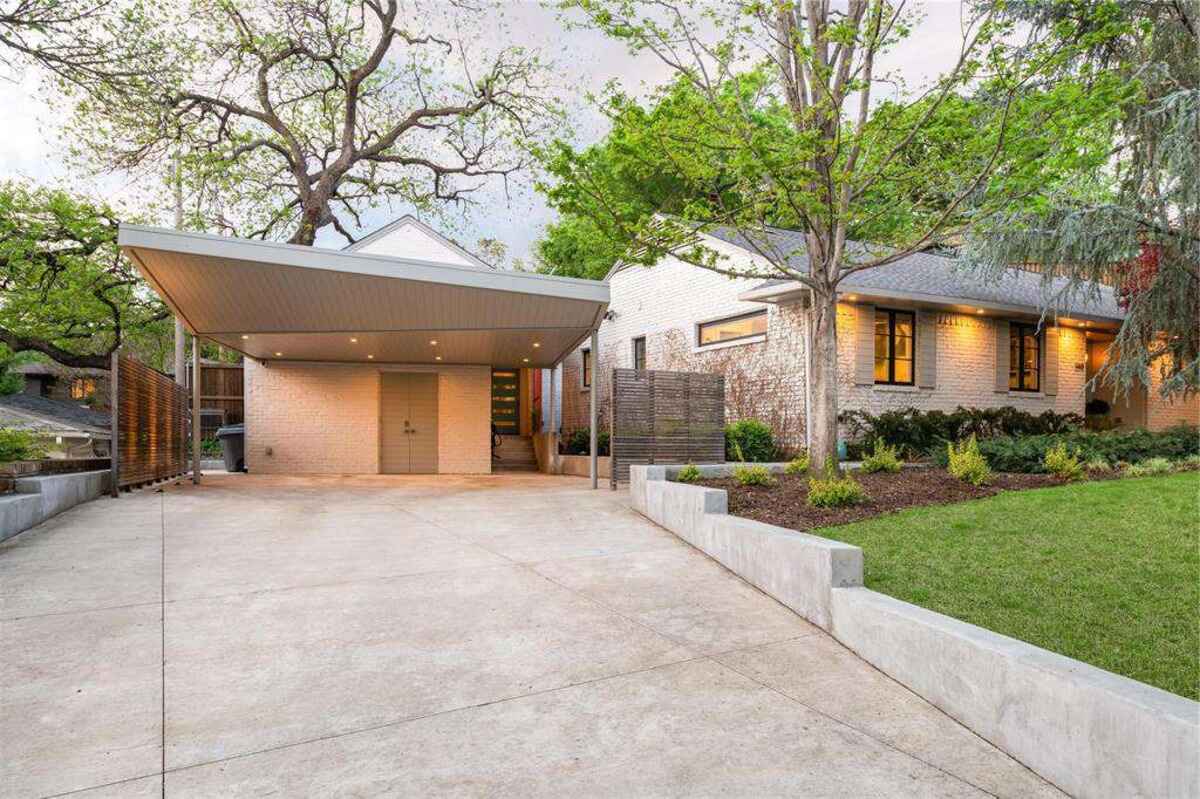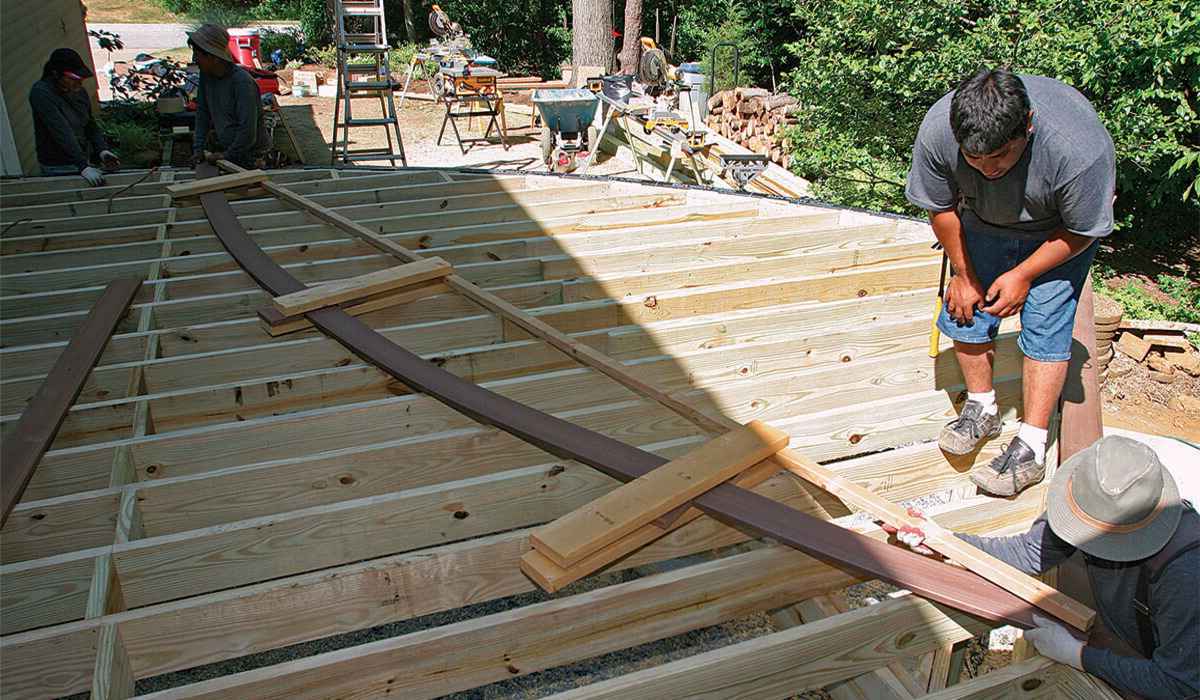Home>Create & Decorate>DIY & Crafts>How To Build A Deck Off A House
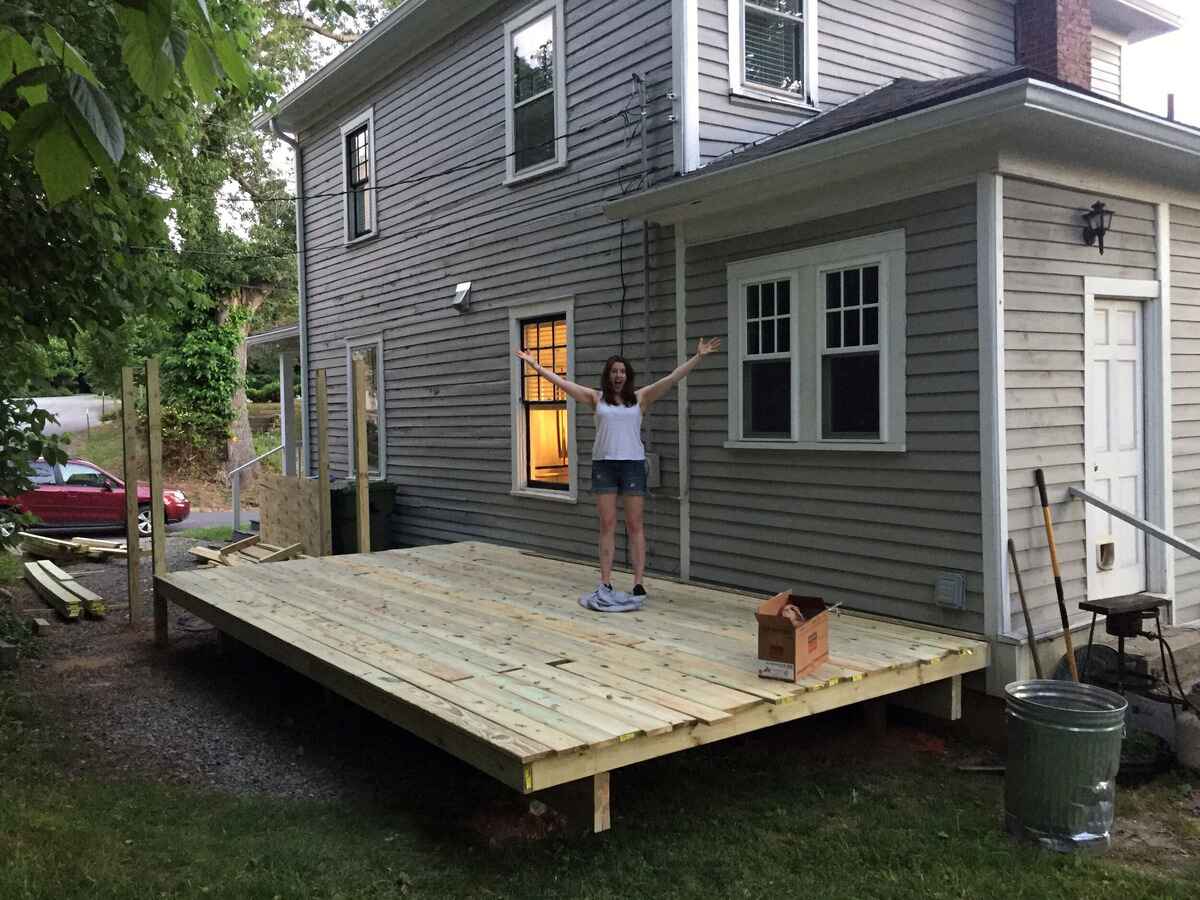

DIY & Crafts
How To Build A Deck Off A House
Published: February 29, 2024

Senior Editor in Create & Decorate, Kathryn combines traditional craftsmanship with contemporary trends. Her background in textile design and commitment to sustainable crafts inspire both content and community.
Learn how to build a deck off a house with our step-by-step DIY guide. Get creative with our DIY & Crafts tips for a stunning deck addition.
(Many of the links in this article redirect to a specific reviewed product. Your purchase of these products through affiliate links helps to generate commission for Twigandthistle.com, at no extra cost. Learn more)
Introduction
Building a deck off a house is an exciting project that can transform your outdoor space into a functional and inviting area for relaxation, entertainment, and enjoying the beauty of nature. Whether you're a seasoned DIY enthusiast or a novice looking to take on a new challenge, constructing a deck can be a rewarding endeavor that adds value to your home and enhances your lifestyle.
A well-designed deck provides a seamless transition between indoor and outdoor living, offering a versatile space for hosting gatherings, savoring meals al fresco, or simply unwinding with a good book. From morning coffee to evening barbecues, a thoughtfully crafted deck becomes an extension of your home, allowing you to make the most of your property and create lasting memories with family and friends.
Before embarking on this project, it's essential to familiarize yourself with the necessary steps and considerations involved in building a deck. From planning and obtaining permits to selecting materials and executing construction, each phase requires careful attention to detail and adherence to local building codes to ensure a safe and durable end result.
In this comprehensive guide, we will walk you through the entire process of building a deck off a house, providing valuable insights, practical tips, and expert advice to help you navigate each stage with confidence. By the time you've completed this journey, you'll be equipped with the knowledge and skills to bring your vision of a stunning, functional deck to life, tailored to your specific needs and preferences.
So, roll up your sleeves, gather your tools, and get ready to embark on an enriching and fulfilling adventure in creating a beautiful outdoor space that will be cherished for years to come. Let's dive into the exciting world of deck construction and turn your dream into a reality!
Read more: How To Build An Owl House
Step 1: Planning and Designing Your Deck
Before you grab your hammer and nails, it's crucial to lay a solid foundation for your deck project by meticulously planning and designing the structure. This initial phase sets the stage for a successful and satisfying construction process, ensuring that your deck aligns with your vision, complements your home's architecture, and meets your functional needs.
Assess Your Needs and Preferences
Begin by envisioning how you intend to use your deck. Will it serve as a cozy spot for morning coffee, a spacious area for outdoor dining and entertaining, or a tranquil retreat for relaxation? Understanding your specific requirements will guide the design process and help you create a deck that seamlessly integrates with your lifestyle.
Consider Your Home's Architecture
Take cues from your house's architectural style to ensure that the deck harmonizes with the overall aesthetic. Whether your home boasts a modern, traditional, or rustic design, your deck should complement its visual appeal while adding a touch of personality and charm.
Determine Deck Size and Layout
Evaluate the available space and decide on the size and layout of your deck. Consider factors such as traffic flow, furniture placement, and potential future expansions. Mapping out the deck's dimensions and configuration will provide a clear roadmap for the construction phase.
Read more: How To Build A Frame House
Explore Material Options
Research various decking materials, such as wood, composite, or PVC, to identify the best fit for your project. Each material offers distinct advantages in terms of durability, maintenance, and aesthetics. Factor in your climate, maintenance preferences, and budget when selecting the most suitable decking material.
Create a Detailed Plan
With your needs, home architecture, space, and material preferences in mind, sketch a detailed plan for your deck. Include measurements, layout, and any additional features, such as built-in seating or planters. A well-thought-out plan serves as a valuable reference throughout the construction process, ensuring that your vision translates seamlessly into reality.
By dedicating ample time to the planning and design phase, you'll lay a solid groundwork for a successful deck project. This thoughtful approach sets the stage for a smooth transition into the subsequent steps of obtaining permits, gathering materials, and bringing your deck to life. So, grab a pencil and paper, let your creativity flow, and craft a vision that will soon materialize into a stunning outdoor oasis.
Step 2: Obtaining Necessary Permits
Before breaking ground on your deck project, it's imperative to navigate the regulatory landscape and secure the required permits. Building codes and regulations vary by location, and obtaining the necessary permits is a crucial step in ensuring that your deck complies with safety standards and local ordinances.
Start by contacting your local building department or municipal office to inquire about the specific permits needed for constructing a deck. You may need to submit detailed plans, including the deck's dimensions, structural elements, and intended materials, for review and approval. Some jurisdictions also require site inspections at various stages of the construction process to verify compliance with building codes.
When applying for permits, be prepared to provide essential information, such as property boundary lines, setback requirements, and details regarding the deck's height and load-bearing capacity. Additionally, you may need to demonstrate adherence to zoning regulations, especially if your deck is close to property lines or within a designated setback area.
While the permit acquisition process may seem bureaucratic, it serves a vital purpose in safeguarding the structural integrity and safety of your deck. By obtaining the necessary permits, you demonstrate your commitment to building a secure and code-compliant structure, protecting both your investment and the well-being of those who will enjoy the finished deck.
It's important to note that proceeding with construction without the required permits can lead to costly consequences, including fines, mandated alterations, or even the dismantling of the deck. By proactively addressing the permit requirements, you mitigate the risk of encountering legal and financial setbacks down the road, allowing you to focus on the enjoyable aspects of bringing your deck to life.
In summary, obtaining the necessary permits is a fundamental aspect of responsible deck construction. By adhering to local regulations and securing the required approvals, you pave the way for a smooth and compliant building process, setting the stage for the exciting phases of gathering materials, preparing the site, and ultimately constructing your dream deck. So, arm yourself with the requisite permits, and get ready to embark on the fulfilling journey of transforming your outdoor space into a captivating and functional retreat.
Step 3: Gathering Materials and Tools
With your deck design finalized and permits in hand, it's time to embark on the exciting phase of gathering the materials and tools necessary to bring your vision to life. This crucial step sets the stage for a smooth and efficient construction process, ensuring that you have everything you need at your fingertips as you begin building your deck.
Read more: How To Build Tiny House On Trailer
Creating a Detailed Materials List
Start by creating a comprehensive materials list based on your deck design and dimensions. This list should include all the essential components, such as decking boards, joists, beams, posts, and hardware. Consider the specific requirements of your chosen decking material, whether it's traditional wood, low-maintenance composite, or another option, and ensure that you have an adequate quantity to cover the planned deck surface.
Selecting Quality Building Materials
When sourcing the materials for your deck, prioritize quality and durability. Opt for pressure-treated lumber or rot-resistant alternatives for structural components, as they offer longevity and resilience against the elements. If you've chosen composite or PVC decking, ensure that the selected boards boast the desired color, texture, and performance attributes to complement your outdoor space.
Acquiring Essential Tools
Equipping yourself with the right tools is essential for a successful deck construction project. Basic tools such as a circular saw, drill/driver, level, tape measure, and framing square are indispensable for cutting, fastening, and ensuring precise alignment during the building process. Additionally, specialized tools like a joist hanger nailer, decking jig, and post level can streamline specific tasks and contribute to the overall efficiency of the project.
Considering Safety Equipment
Prioritize safety by acquiring the necessary personal protective equipment (PPE), including safety glasses, hearing protection, and work gloves. If your deck design involves elevated construction, fall protection gear such as a harness and anchor points should be included to ensure a secure working environment.
Read more: How To Build A Tech Deck
Procuring Additional Features and Finishes
If your deck design incorporates specific features such as railing systems, lighting, or decorative elements, ensure that you have all the required components and accessories on hand. This may include balusters, post caps, lighting fixtures, and finishing touches that enhance the aesthetic appeal and functionality of your deck.
By meticulously gathering the required materials and tools, you set the stage for a seamless and productive construction process. With everything in place, you're well-prepared to move on to the next steps of preparing the site, building the deck frame, and bringing your outdoor oasis to fruition. So, roll up your sleeves, gather your supplies, and get ready to turn your dream deck into a tangible reality.
Step 4: Preparing the Site
Preparing the site for deck construction is a critical phase that sets the foundation for a sturdy and long-lasting outdoor structure. This step involves a series of essential tasks aimed at ensuring the site is properly leveled, cleared of obstructions, and equipped to support the weight and dimensions of the planned deck.
Clearing and Marking the Area
The first task in site preparation is to clear the designated area of any vegetation, debris, or obstacles that may impede the construction process. This involves removing rocks, roots, and any existing structures that could interfere with the deck's footprint. Once the area is cleared, it's important to mark the precise boundaries of the deck using stakes and string, outlining the perimeter to guide the subsequent excavation and construction activities.
Excavation and Grading
With the boundaries marked, excavation and grading come into play to ensure a level and stable foundation for the deck. Excavation involves digging into the soil to create a level surface, while grading focuses on adjusting the soil to achieve the desired slope for proper drainage. Careful attention to these steps is crucial, as they directly impact the structural integrity and longevity of the deck.
Read more: How To Build A Deck Railing
Installing Footings and Posts
The next crucial task is the installation of footings and posts, which provide the structural support for the deck. Footings are typically made of concrete and are strategically positioned at specific intervals to bear the weight of the deck and distribute it evenly to the underlying soil. Posts are then anchored to the footings, forming the vertical supports for the deck's framework.
Verifying Alignment and Leveling
Once the footings and posts are in place, it's essential to verify their alignment and ensure they are perfectly level. This meticulous process involves using a combination of string lines, levels, and measuring tools to confirm that the footings and posts are positioned accurately and at the correct height. Precise alignment is crucial for the stability and structural integrity of the deck.
Addressing Drainage Considerations
In addition to leveling the site, addressing drainage considerations is paramount to prevent water accumulation and potential damage to the deck. This may involve incorporating measures such as installing a gravel bed or a drainage system beneath the deck to facilitate the efficient flow of water away from the structure, safeguarding its longevity and minimizing moisture-related issues.
By meticulously executing the site preparation phase, you establish a solid groundwork for the subsequent stages of building the deck frame, installing decking boards, and adding finishing touches. With the site meticulously prepared, you're well-positioned to move forward with confidence, knowing that your deck will be anchored on a stable and secure foundation, ready to fulfill its role as a captivating outdoor retreat.
Step 5: Building the Deck Frame
With the site meticulously prepared, the focus now shifts to the pivotal task of building the deck frame, a foundational element that forms the structural skeleton of the entire deck. This phase involves assembling the framework that will support the decking boards, create a stable surface for the deck, and ensure its long-term durability and resilience.
Read more: How To Build A House Of Cards
Positioning the Joists and Beams
The first step in building the deck frame is positioning the joists and beams, which form the primary framework for the deck. Joists, typically made of pressure-treated lumber, are horizontally oriented components that provide the essential support for the decking boards. Beams, on the other hand, are the horizontal load-bearing elements that support the joists and distribute the deck's weight to the footings and posts.
Establishing Proper Spacing and Alignment
Ensuring proper spacing and alignment of the joists is crucial for the structural integrity and longevity of the deck. Careful attention must be paid to aligning the joists parallel to one another and maintaining consistent spacing to accommodate the decking material. This meticulous process involves using a framing square, level, and measuring tape to verify that the joists are positioned accurately and at the appropriate intervals.
Securing the Frame Components
Once the joists and beams are positioned and aligned, the next step is to secure them in place using appropriate fasteners, such as joist hangers, nails, or screws. Joist hangers, designed to attach the joists to the beams, play a critical role in ensuring a secure and stable connection. Additionally, galvanized or stainless steel fasteners are recommended to resist corrosion and maintain the structural integrity of the frame.
Incorporating Additional Structural Elements
Depending on the design and specific requirements of the deck, additional structural elements such as ledger boards, bracing, and rim joists may be incorporated to enhance the stability and load-bearing capacity of the frame. Ledger boards, for instance, are attached to the house to provide lateral support, while bracing reinforces the frame against lateral movement and ensures overall stability.
Read more: How To Build A Dome House
Verifying Levelness and Squareness
As the frame takes shape, it's essential to verify that it is level and square to guarantee a stable and visually appealing deck. This involves using a level to ensure that the frame is horizontally aligned and adjusting the support elements as needed. Additionally, confirming the squareness of the frame by measuring diagonally from corner to corner helps maintain structural integrity and aesthetic symmetry.
By meticulously executing the process of building the deck frame, you establish a solid foundation for the subsequent steps of installing decking boards, adding railing and stairs, and applying finishing touches. With the frame securely in place, your vision of a functional and visually stunning deck is one step closer to becoming a reality, poised to enrich your outdoor living experience for years to come.
Step 6: Installing Decking Boards
With the deck frame securely in place, the focus now shifts to the transformative phase of installing the decking boards, a pivotal step that brings the deck to life and sets the stage for a visually captivating and functional outdoor space. This process involves laying the decking material onto the frame, creating a stable and aesthetically pleasing surface that will serve as the foundation for countless moments of relaxation and enjoyment.
Selecting the Right Decking Material
Before commencing the installation, it's essential to ensure that the chosen decking material aligns with your aesthetic preferences, maintenance requirements, and overall vision for the deck. Whether you've opted for traditional wood, low-maintenance composite, or another material, verifying that the boards meet your expectations in terms of color, texture, and durability is crucial.
Planning the Layout and Orientation
Careful consideration should be given to the layout and orientation of the decking boards to achieve a visually appealing and structurally sound result. Factors such as board orientation, staggered joints, and end-to-end spacing play a significant role in creating a cohesive and seamless deck surface. Additionally, planning for any necessary board trimming or specialized cuts ensures a precise and tailored fit.
Read more: How To Build A Brick House
Securing the Decking Boards
As the installation commences, each decking board is meticulously positioned and secured to the frame using appropriate fasteners, such as screws or nails. Ensuring consistent spacing between the boards and maintaining a uniform overhang at the deck's perimeter contributes to a polished and professional finish. Additionally, utilizing specialized tools like a decking jig can streamline the installation process and facilitate precise board alignment.
Addressing Expansion Gaps and End Sealing
Incorporating expansion gaps between the decking boards is essential to accommodate natural wood movement and prevent issues such as warping or buckling. These gaps, typically achieved using spacers, allow for proper ventilation and drainage while safeguarding the integrity of the deck surface. Furthermore, sealing the ends of the decking boards with a protective sealant or end grain sealer helps mitigate moisture-related damage and prolongs the boards' lifespan.
Verifying Alignment and Levelness
Throughout the installation, verifying the alignment and levelness of the decking boards is paramount to ensure a visually pleasing and structurally sound deck surface. Utilizing a level and straightedge to confirm that the boards are uniformly aligned and adjusting their positioning as needed contributes to a polished and professional result.
By meticulously executing the installation of the decking boards, you bring your vision of a stunning and functional deck one step closer to reality. With each board securely in place, your outdoor space begins to take shape, poised to become a cherished retreat for relaxation, entertainment, and the creation of lasting memories.
Step 7: Adding Railing and Stairs
As the deck nears completion, the focus shifts to the crucial elements of adding railing and stairs, which not only enhance the safety and functionality of the structure but also contribute to its aesthetic appeal. This phase involves integrating railing systems to provide security and defining the deck's perimeter, as well as incorporating stairs to facilitate seamless access to the outdoor space.
Read more: DIY: Build A Hobbit House
Selecting Railing Systems
The first step in adding railing involves selecting the appropriate system that aligns with your design preferences and safety requirements. Whether you opt for traditional wood railings, sleek metal balusters, or low-maintenance composite materials, ensuring that the chosen railing complements the overall aesthetic of the deck is essential. Additionally, verifying compliance with local building codes regarding railing height, spacing, and load-bearing capacity is crucial to guarantee a safe and code-compliant installation.
Planning and Installation
Careful planning of the railing layout and positioning is paramount to achieve a visually appealing and structurally sound result. Factors such as post placement, baluster spacing, and the integration of handrails should be meticulously considered to create a cohesive and secure railing system. Once the layout is determined, the installation process involves securely attaching the posts to the deck frame, positioning the balusters or infill material, and incorporating handrails to provide stability and guidance along the railing.
Incorporating Stair Design
Incorporating stairs into the deck design requires thoughtful consideration of factors such as the number of steps, tread width, riser height, and overall dimensions to ensure safe and comfortable access to the deck. Whether opting for traditional straight stairs, elegant curved designs, or multi-tiered configurations, prioritizing safety and ease of use is essential. Additionally, integrating landing platforms and handrails where necessary contributes to a secure and user-friendly stair system.
Ensuring Compliance and Safety
Throughout the process of adding railing and stairs, verifying compliance with local building codes and safety standards is paramount. This includes confirming the appropriate railing height, baluster spacing, and load-bearing capacity to ensure a secure and code-compliant installation. Additionally, attention to detail in the construction of stairs, including uniform step dimensions, secure attachment to the deck, and the incorporation of handrails, contributes to a safe and user-friendly access point to the deck.
Read more: How to Build a Rooftop Deck
Enhancing Aesthetic Appeal
Beyond their functional role, railing and stairs serve as design elements that contribute to the overall aesthetic appeal of the deck. Whether opting for ornate railings that add a touch of elegance or sleek, modern designs that exude contemporary charm, the integration of these elements adds character and visual interest to the outdoor space. Similarly, thoughtfully designed stairs can become a focal point, seamlessly blending with the deck's architecture and enhancing its visual allure.
By meticulously executing the addition of railing and stairs, you bring your vision of a safe, functional, and visually captivating deck to fruition. With these elements seamlessly integrated, your outdoor space becomes a welcoming and secure environment, ready to accommodate gatherings, relaxation, and the enjoyment of the natural surroundings.
Step 8: Applying Finishing Touches
As the deck construction journey nears its culmination, the application of finishing touches serves as the crowning phase that elevates the visual appeal, functionality, and ambiance of the outdoor space. This pivotal step involves integrating elements that add character, comfort, and a personalized touch to the deck, transforming it into a captivating retreat that reflects your unique style and enhances the overall outdoor living experience.
Sealing and Staining
Applying a protective sealant or stain to the decking boards not only enhances their natural beauty but also safeguards them against the damaging effects of moisture, UV rays, and foot traffic. This crucial step preserves the integrity of the wood or composite material, prolonging its lifespan and maintaining the deck's aesthetic allure for years to come.
Outdoor Lighting
Incorporating strategic lighting elements such as deck post lights, stair riser lights, or overhead fixtures not only extends the functionality of the deck into the evening hours but also creates an inviting and enchanting ambiance. Thoughtfully positioned lighting enhances safety, accentuates architectural features, and sets the stage for memorable gatherings and tranquil evenings under the stars.
Read more: How To Build A Curved Deck
Furnishings and Decor
Selecting and arranging outdoor furnishings, such as comfortable seating, dining sets, and accent pieces, infuses the deck with comfort and style, creating inviting spaces for relaxation, entertainment, and socializing. Additionally, incorporating decorative elements such as potted plants, outdoor rugs, and artistic accents adds personality and charm, transforming the deck into a personalized haven that reflects your taste and lifestyle.
Privacy Features
Integrating privacy features, such as latticework, trellises, or strategically positioned plants, enhances the sense of seclusion and intimacy, creating a tranquil retreat shielded from neighboring views. These elements not only contribute to a serene and private ambiance but also add visual interest and texture to the deck's surroundings.
Maintenance Considerations
Implementing a maintenance plan that includes regular cleaning, inspections, and upkeep of the deck and its components is essential for preserving its beauty and structural integrity. This may involve periodic washing, resealing, and addressing any wear and tear to ensure that the deck remains a pristine and inviting space for years to come.
By meticulously attending to these finishing touches, you elevate the deck from a construction project to a captivating and functional outdoor sanctuary. Each element contributes to the overall allure and usability of the space, ensuring that your deck becomes a cherished extension of your home, ready to accommodate memorable moments and provide a backdrop for countless hours of relaxation and enjoyment.
Conclusion
As we conclude this comprehensive guide to building a deck off a house, it's evident that the journey of transforming an outdoor space into a captivating and functional retreat is a rewarding and enriching endeavor. From the initial stages of planning and obtaining permits to the meticulous execution of site preparation, frame construction, and the integration of finishing touches, each phase contributes to the creation of a space that seamlessly blends with the natural surroundings and enhances the overall living experience.
The process of building a deck is not merely a construction project; it's a journey of envisioning, planning, and bringing to life a space that becomes an extension of your home and a backdrop for cherished moments. It's about creating a versatile environment that accommodates lively gatherings, tranquil relaxation, and the appreciation of nature's beauty. It's a testament to craftsmanship, attention to detail, and the fusion of functionality with aesthetic appeal.
Throughout this guide, we've emphasized the importance of thoughtful planning, adherence to safety standards, and the infusion of personal style into the deck construction process. From selecting the right materials and tools to integrating essential structural elements and adding decorative touches, every decision and action contributes to the realization of a space that reflects your vision and enhances your lifestyle.
As you embark on your own deck construction journey, we encourage you to approach each phase with enthusiasm, creativity, and a commitment to excellence. Embrace the process as an opportunity to craft a space that resonates with your unique preferences and serves as a canvas for unforgettable experiences. Whether it's the warmth of the sun on a lazy afternoon, the laughter of loved ones during a gathering, or the tranquility of a quiet evening, your deck will become a backdrop for countless moments that enrich your life.
In the end, the completion of a deck project marks not just the physical realization of a structure but the fulfillment of a vision—a vision of an outdoor sanctuary that becomes an integral part of your home and a source of joy and relaxation. As you step onto your newly constructed deck, may it serve as a testament to your creativity, dedication, and the enduring value of crafting a space that brings comfort, beauty, and lasting memories into your life.


